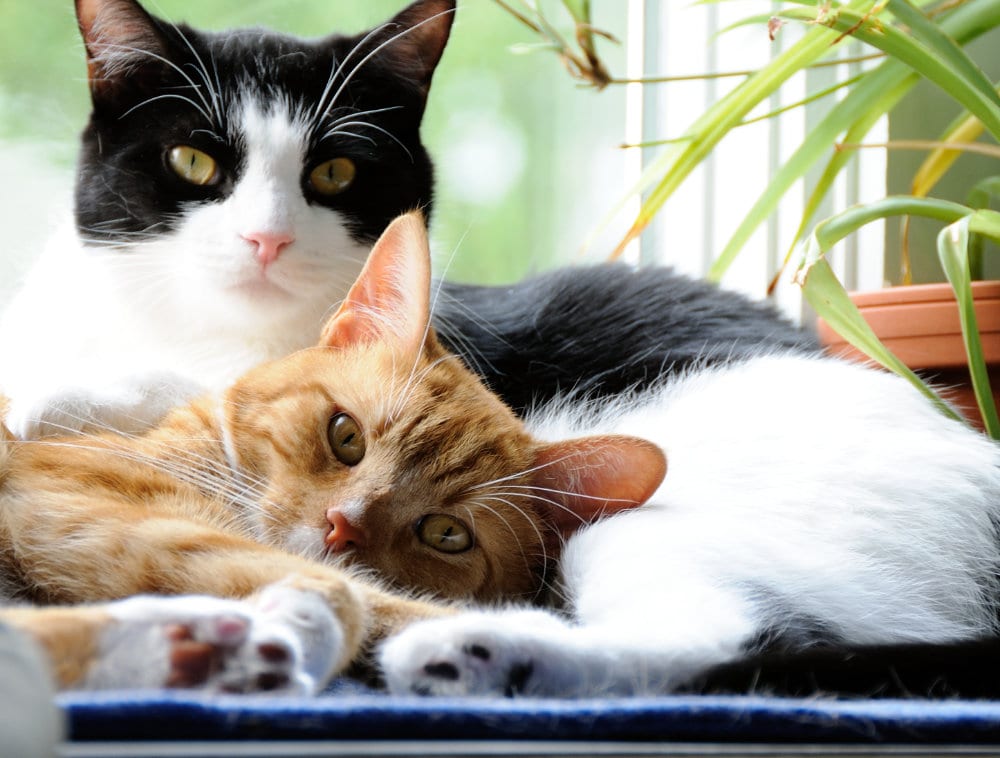How to get rid of cat fleas?
How to get rid of cat fleas?
Fleas are among the most common parasites in cats and, against all appearances, the problem with fleas does not have to be limited to feral and outdoor cats. A flea is a troublesome parasite which reproduces quickly and is clever. How to deal with flea infestation in our cat?
A flea is a small, wingless insect with strong legs enabling it to make long jumps (30 cm high and 50 cm long). Fleas feed on the blood of the animals they prey on. The cat flea, which is most common in domestic pets, attacks cats, but also feeds on dogs. Fleas lay eggs on the body of the host. Eggs do not attach to the skin or coat. They fall down and are present in the pet’s environment. The eggs hatch into larvae that prefer warm and dark places. The larva can quickly turn into a chrysalis, and subsequently into an adult specimen. Fleas attack when they sense heat and vibration of a potential host. Feral or outdoor cats are the most vulnerable to flea infestation. It may happen, however, that a flea can get to the house from a cat hotel, or even that we unknowingly bring home an egg or an adult specimen as if it was a stowaway.

Flea infestation – how to recognise it?
Finding a flea in a cat’s coat may not be easy. Parasites can be easily spotted in light-coloured cats as well as those with not very thick fur. Unfortunately, if you notice one flea, this usually means that there are more of them. However, the flea invasion is most easily recognised not by the presence of the insects themselves, but… their dirt. They are visible on the coat and, most of all, in places where the cat sleeps. They fall from the pet like black powder, and if you crush them, you can see dried blood. A cat attacked by fleas scratches and licks itself intensively. Biting fleas introduce antigens into the cat’s blood, causing, among other things, a strong itching. Other symptoms of flea infestation include attempts to bite the parasites out of the coat, hypersensitivity, paroxysmal skin cramps, nervousness. The consequences of flea infestation include various dermatological diseases, including flea allergy dermatitis. Fleas are also an intermediate host of the tapeworm. Multiple parasite infestations can lead to anaemia, especially in kittens.
How to get rid of fleas?
If your cat is accustomed to bathing, it is a good idea to bathe it in an anti-fleas shampoo. You will get rid of a large portion of the parasites and relieve the pet. Before bathing, damp the head and muzzle with water to prevent fleas from trying to move to these areas. However, the bath is usually not enough. It may be necessary to use prolonged anti-fleas medicine that can eliminate fleas and prevent further invasions. Preparations for cats are usually in the form of spot-on drops (drops to be placed on the neck of the cat) or a collar soaked in anti-flea substances. Dr Seidel offers Sabunol flea collars that contain two active substances: imidacloprid and geraniol. The product starts to work an hour after putting it on the cat’s neck. Active substances are released and spread through the coat and skin of the pet, acting on the fleas by contact. The collar is waterproof and should remain on the pet’s neck. It protects your cat from fleas for a period of four months. It is also safe – thanks to the perforation effect, the cat is able to tear it off if it catches on a branch. Remember to use only products intended for cats. Anti-flea products for dogs can contain permethrin which is safe for dogs but deadly poisonous for cats!
Chemical anti-flea substances may not be used in kittens under 3 months of age. In the case of small kittens, often the only way to get rid of fleas is to eliminate them mechanically, e.g. by combing with a dense comb.
Do not forget about your environment
Unfortunately , to get rid of fleas feeding on the cat is not enough. There are also eggs and larvae which exist in the cat’s environment as well as adult fleas which jump out of the cat after feeding on a daily basis. The cat’s bedding, blankets and bedspreads with which the cat has a frequent contact should be washed at the highest allowable temperature.
After fighting flea infestation, remember to protect your cat from another parasite attack. It may also be necessary to conduct deworming. Infestation with tapeworms is very common in cats struggling with flea infestation, and the dog tapeworm living in these insects is also dangerous for humans.
2 октября 2023


